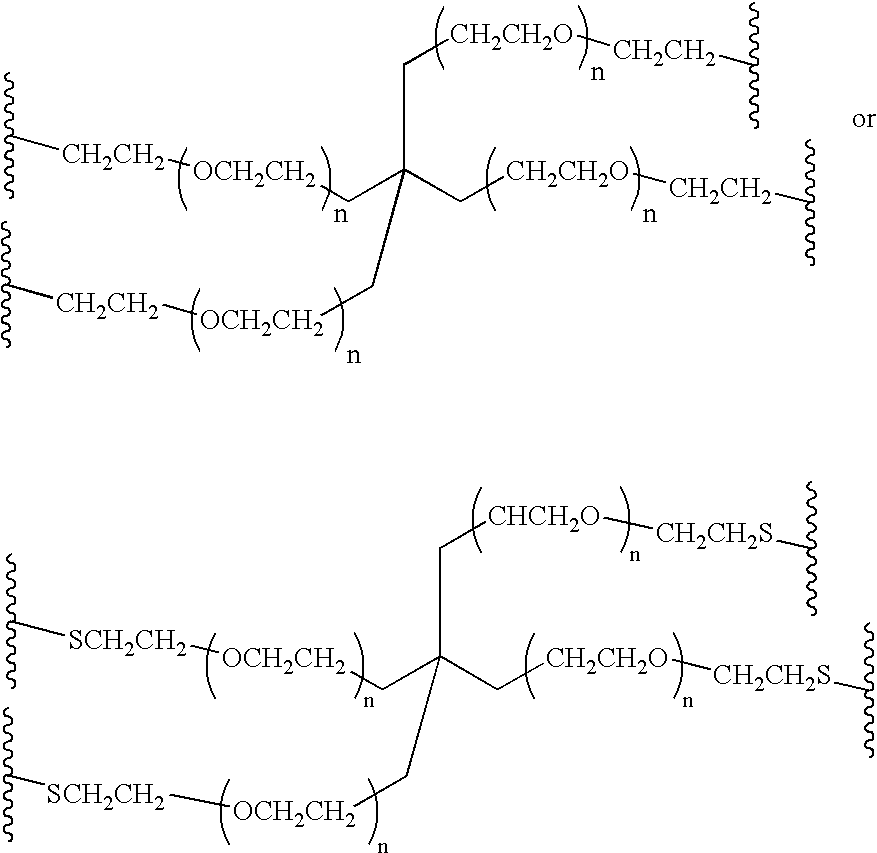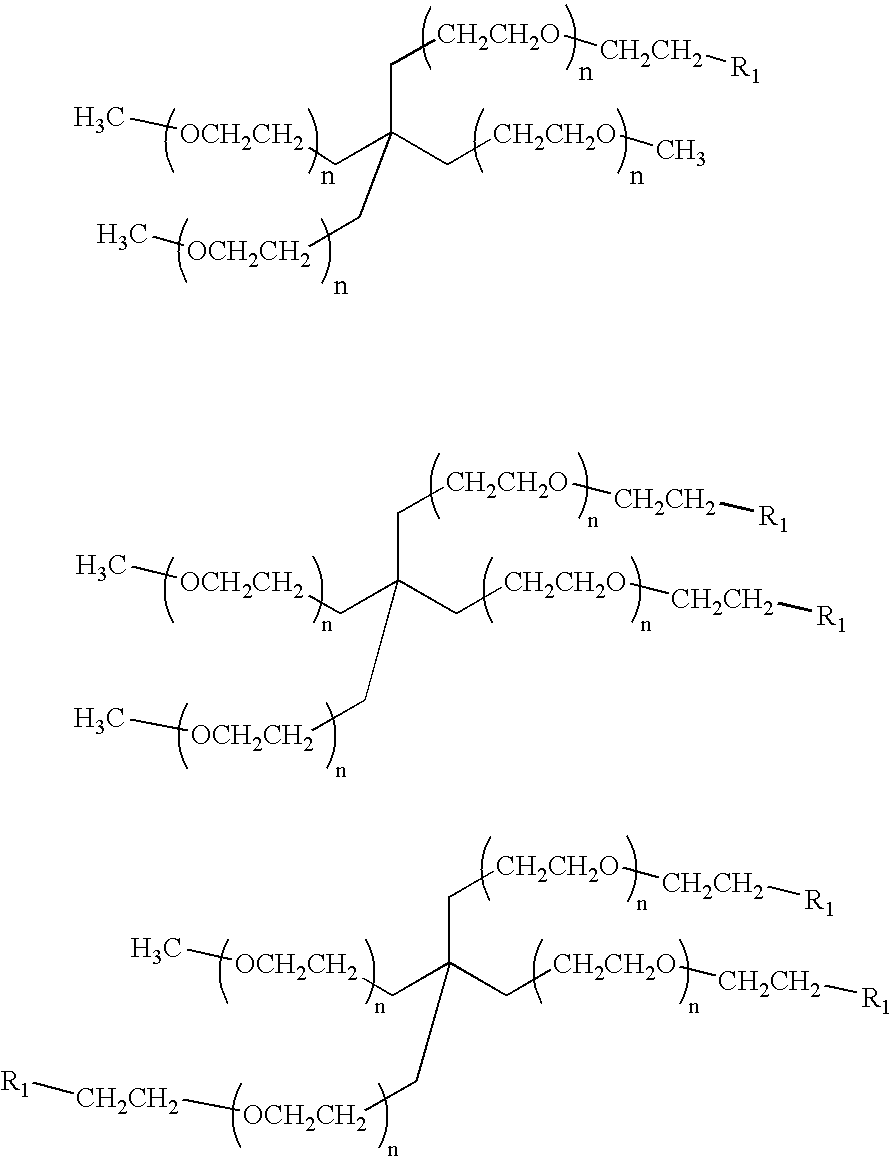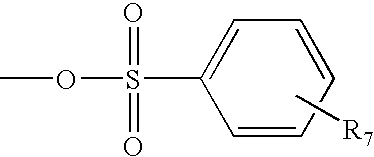Methods of preparing polymers having terminal amine groups using protected amine salts
a technology of amine salts and polymers, which is applied in the direction of medical preparations, pharmaceutical non-active ingredients, powder delivery, etc., can solve the problems of significant reduction of purity of desired end products, significant increase in the cost of desired products, and significant hydrolysis of significant percentages of peg-halide, etc., to achieve high purity, improve the effect of integrating peg-amine and high purity
- Summary
- Abstract
- Description
- Claims
- Application Information
AI Technical Summary
Benefits of technology
Problems solved by technology
Method used
Image
Examples
example 1
40KDabis-PEG amine
[0080][0081] a) PEG-tosylate (PEG-OTs). To a solution of 40KDaΔPEG-OH (100 g, 2.5 mmoles, 1 eq) in 800 mL of DCM were added 400 mL of a 30% aqueous NaOH solution and BnEt3NCl (228 mg, 1.0 mmol, 0.2 eq). Then, to the vigorously stirred mixture a solution of p-toluenesulfonyl chloride (2.86 g, 15 mmol, 3 eq) in 500 mL of DCM was added dropwise via addition funnel over 2 hours, and the reaction mixture was stirred at room temperature overnight. After addition of 500 mL of DCM and 200 mL of a saturated NaCl solution, the organic phase was separated and washed twice with 200 mL of a saturated NaCl solution. The organic phase was dried over anhydrous MgSO4, filtered and evaporated under vacuum to give a solid that was dissolved in a minimum amount of DCM and precipitated with ethyl ether. Filtration provided 97 g of 40KDaΔPEG-OTs (96% yield). 13C NMR: 21.57, 68.47, 69.07, 70.21-71.75 (PEG), 127.68,129.55, 132.69, 144.44. [0082] b) PEG-NBoc2. To a solution of 40KDaΔPEG-O...
example 2
20KDabis-PEG-amine
[0084]
[0085] The corresponding 20KDaΔPEG-amine is made from 20KDaΔPEG-OTs prepared in the same way above except that PEG 20 KDa is used in place of PEG 40 KDa. [0086] Compound 6 is made under the same conditions of 2 in Example 1. The structure of 6 is confirmed by NMR. [0087] Compound 7 is made under the same conditions of 3 in Example 1. The structure of 7 is confirmed by NMR. [0088] Compound 8 is made under the same conditions of 4 in Example 1. The structure of 8 is confirmed by NMR.
example 3
40KDabis-PEG-N-methylamine
[0089][0090] a)PEG-tosylate (PEG-OTs). The procedure of Example 1 is repeated. [0091] b) PEG-NMeBoc. Compound 10 is made under the same conditions as in example 1 except that an equivalent amount of BocMeNK is used instead of BOc2NK. The structure of 10 is confirmed by NMR. [0092] c) PEG-N-methylamine (PEG-NHMe). Compound 11 is made under the same conditions as in Example 1 except that an equal amount of compound 10 is used instead of compound 3. Structure is confirmed by NMR.
PUM
| Property | Measurement | Unit |
|---|---|---|
| weight average molecular weight | aaaaa | aaaaa |
| weight average molecular weight | aaaaa | aaaaa |
| weight average molecular weight | aaaaa | aaaaa |
Abstract
Description
Claims
Application Information
 Login to View More
Login to View More - R&D
- Intellectual Property
- Life Sciences
- Materials
- Tech Scout
- Unparalleled Data Quality
- Higher Quality Content
- 60% Fewer Hallucinations
Browse by: Latest US Patents, China's latest patents, Technical Efficacy Thesaurus, Application Domain, Technology Topic, Popular Technical Reports.
© 2025 PatSnap. All rights reserved.Legal|Privacy policy|Modern Slavery Act Transparency Statement|Sitemap|About US| Contact US: help@patsnap.com



